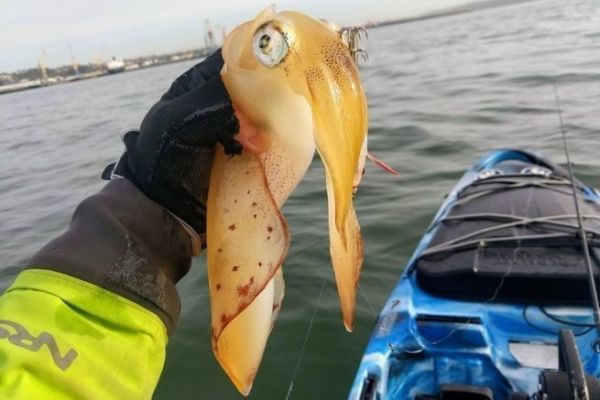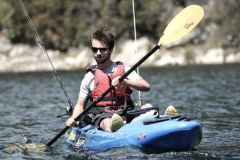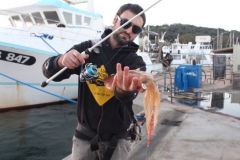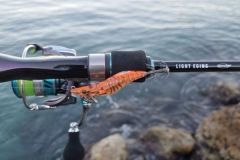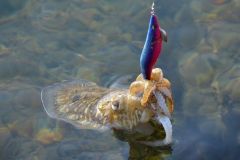Adapting to conditions
Finally a lull after three weeks of turbulence and two major storms. After a long period without being able to put the kayak in the water, a short lull finally appeared. It's not a beautiful autumn day like you can get from time to time, but a few hours without wind and rain will do the trick. Of course, temperatures have dropped. So has the seawater, which is 11.5°C. On our last outing, some twenty days ago, it was still 16°C. The tide is falling, with a coefficient of 86 and a tipping point around midday.
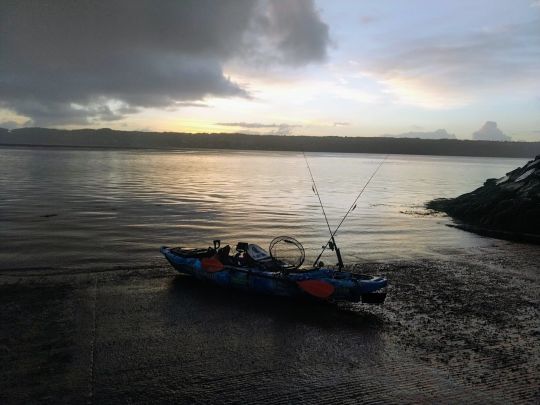
When preparing an outing, all these different parameters need to be taken into account to establish a basic outline of the strategy to be implemented. Except that an additional parameter has entered the equation: water turbidity. After twenty or so days of heavy rain and wind, the Brest roadstead has become laden with the sludge carried by the water, which is ravaging farmland. It's brown/green and there's a lot of fresh water present, since we're on the ebb tide. As a result, you can forget about using swimbaits and soft lures, as unless you place them right in front of a potential fish's nose, there's little chance of finding any activity. A change of strategy, then, and it's time for a cephalopod session.
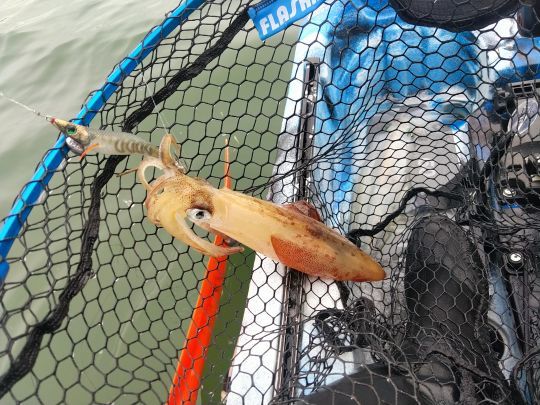
Looking for squid
Since squid don't like freshwater, you'll have to look for them on the deepest bottoms in this part of the harbor. These are usually around 15 metres deep. As the water is murky, I'm going to use a double phosphorescent jig on the bottom of the tataki rig, an Aurie Q 3D from Yo Zuri. Above, my traditional floating jig, an ultra calmero, also from Yo Zuri. To increase the surface area explored, I'm going to practice slow trolling with the tataki, which will increase the chances of finding a few customers.
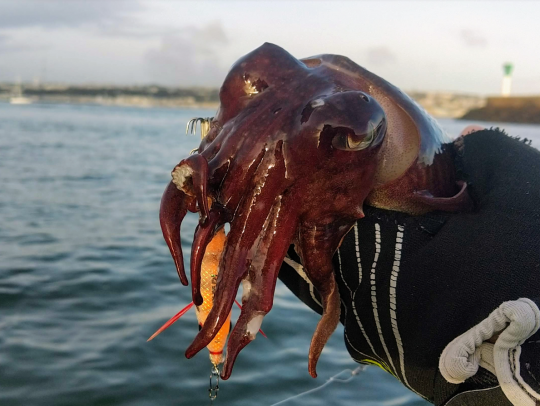
And the method works, after finding a few cuttlefish, I end up deciding on some pretty squid. I found them next to the chains of the channel buoys, perhaps they find their food around these chains or perhaps they use them as markers to find their hunting grounds, I couldn't say, the main thing is to find them. Personally, I don't keep the cuttlefish, preferring the squid for cooking, which will end up with merguez and peppers, as last time, this recipe is excellent.
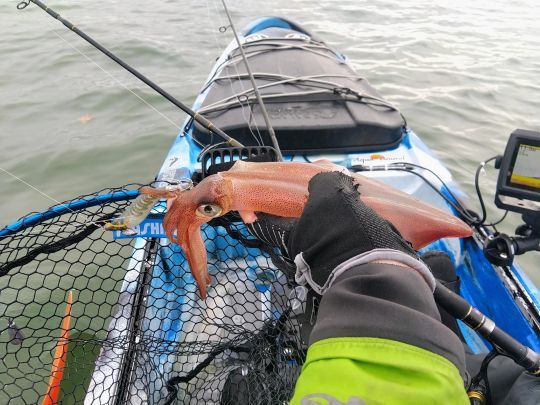
In these weather conditions, I had to find a solution, I could also have used attractant which is effective when the water is cloudy, but I had forgotten about it... Raking the ground was the right solution for this outing, and I was also able to decide by tapping the sand several times with the lead from the rig. This little incongruous noise or the vibrations generated by the contact of the lead with the bottom must be felt by the squids, at least I think so and these animals are curious by nature. In short, bad conditions can be a bonus, encouraging you to innovate, to change your habits, in a word to adapt, which is one of the pleasures of fishing.

 /
/ 